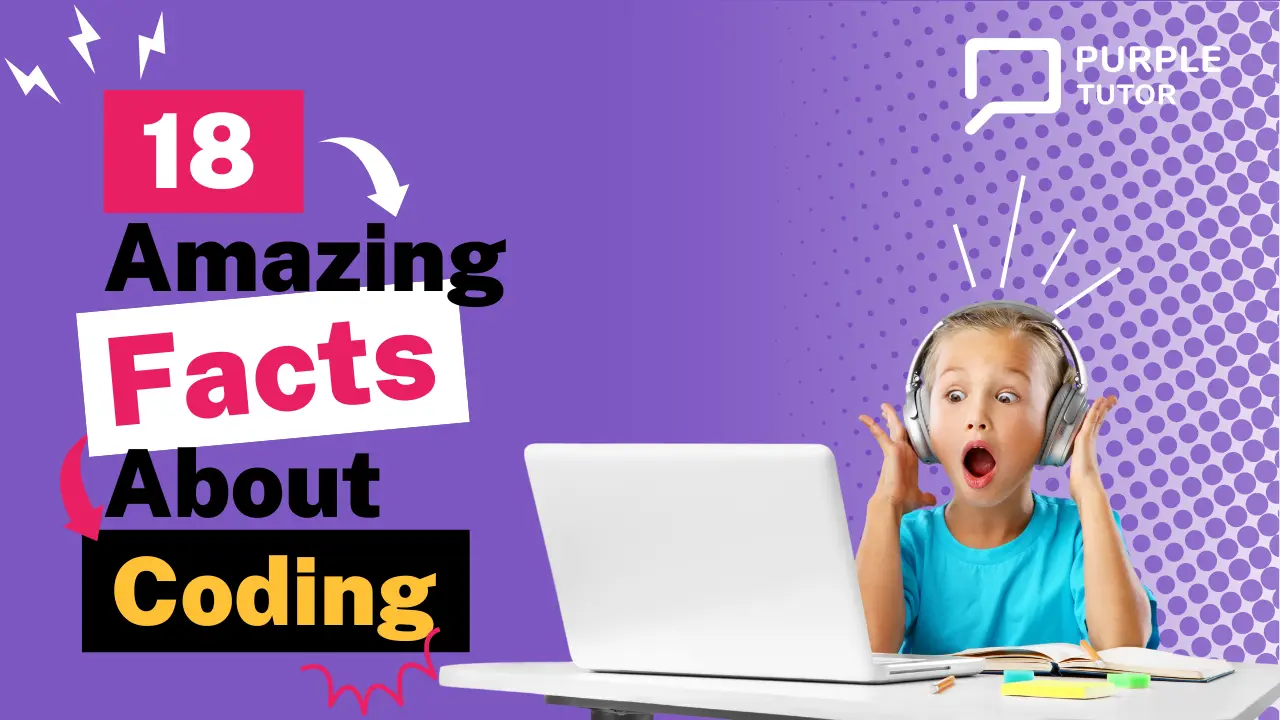
With the rapid advancement of technology, coding skills are essential to develop, maintain, and adapt to various digital tools and systems. It has become a necessary skill in today’s digital world. It helps to empower individuals to navigate and shape the future. Knowledge of coding enables individuals to automate tasks, streamline processes, and contribute to the digital transformation of businesses.
It’s true that when one hears the word “programming,” many people feel apprehensive. The idea of coding is complicated, but as we browse through its technical realm, we will later realize how fascinating and mind-blowing it is. Here is a list of different facts about coding and programming trivia that you might not have encountered before:
“Don’t just play games, create them! Coding lets you be the master of your own digital universe.”
Fun Facts about Coding Explained
- The world’s first computer programmer is considered to be Ada Lovelace, who wrote algorithms for Charles Babbage’s Analytical Engine in the 1840s. She envisioned that computers could go beyond simple calculations and be used for creative purposes.
- The concept of a computer “bug” originated in 1947 when computer scientist Grace Hopper found a moth trapped in a relay of the Harvard Mark II computer. She famously taped the moth in the logbook, coining the term “debugging” when fixing computer issues.
- The programming language Python is named after the British comedy group Monty Python. Guido van Rossum, the language’s creator, was a fan of the show and chose the name to reflect the language’s simplicity and humor.
- The first high-level programming language was Fortran (short for Formula Translation), developed by IBM in the 1950s. It allowed programmers to write instructions using English-like statements, making it easier to code complex mathematical operations.
- JavaScript, despite its name, is not related to Java. JavaScript was created by Brendan Eich at Netscape in 1995 as a scripting language for web browsers. It enables interactive features and dynamic content on websites.
- The concept of open-source software allows users to access, modify, and distribute the source code freely. This fosters collaboration and innovation, as developers worldwide can contribute to the improvement and customization of software.
- The first known computer programmer’s error occurred in 1946 when a programmer at the University of Pennsylvania incorrectly set up a command for the Electronic Numerical Integrator and Computer (ENIAC), causing a malfunction.
- The popular coding website GitHub was founded in 2008 and has become a central hub for developers to collaborate, share code, and work on open-source projects.
- The concept of version control systems, such as Git, allows developers to track changes in their code over time. It enables collaboration, easy rollback to previous versions, and merging of code from multiple contributors.
- The video game industry heavily relies on coding. It is used in building complex game engines and programming languages to create interactive gameplay experiences.
- Coding is not limited to a specific age group or gender. There are coding programs and initiatives aimed at encouraging diversity and inclusion in technology fields, empowering people from all backgrounds to learn and pursue coding careers.
- The popularity of coding boot camps has surged in recent years, offering intensive and immersive training programs that teach coding skills in a condensed period. These boot camps often focus on preparing students for specific tech industry roles.
- Many programming languages have their own communities, online forums, and libraries of code snippets. Developers can utilize to solve problems and accelerate development.
- The first computer virus capable of spreading over a network was the Morris Worm. It was created by Robert Tappan Morris in 1988. It inadvertently caused significant disruption by slowing down thousands of computers.
- The Raspberry Pi, a low-cost credit card-sized computer, was developed in the United Kingdom with the aim of promoting computer science education and coding skills.
- Programmers often use “pseudo code” as a way to plan and outline their programs before writing actual code. Pseudo code uses plain language and informal structures to describe the logic and steps of a program.
- The programming language C, developed in the early 1970s, has had a significant impact on modern programming languages. Many other languages, including C++, Java, and Python, have borrowed syntax and concepts from C.
- Coding can be a creative outlet, allowing developers to bring their ideas to life and build innovative solutions to problems. It provides an avenue for self-expression and exploration in the digital realm.
- These facts illustrate the diverse and fascinating world of coding, showcasing its historical roots, creative potential, and impact on technology and society.
Wrapping Up
So, if you get tired after working on complex code for long hours. I hope these fun facts about coding has refreshed your mind!
Frequently Asked Questions (FAQs)
1. Can I try a free class?
A: Yes. the first demo class is free of charge. You can book the free class from the booking link.
2. Is the coding course schedule flexible?
A: The courses for kids are flexible. You can select any time and any day that works around your child’s schedule.
3. How do I know what coding course is right for my kid?
A: The teachers assess the level of the student in the demo class based on which the course is suggested.
4. Will my child receive a certificate?
A: Students get certificated after completion of each course. The certificate recognises the skills the student learnt and the level of mastery achieved.
5. What do you require to learn coding from Purple Tutor?
A: You need a laptop/computer with a webcam and a stable internet connection.
